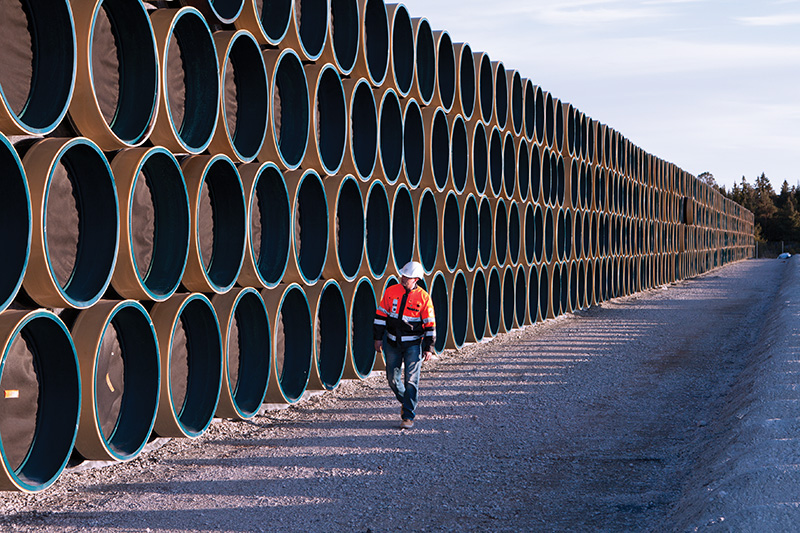US Paves the Way for a New Era in Hydrogen: Federal Funding Boosts Clean Hydrogen Initiatives
(Reuters) — The Biden administration strengthened its support for clean hydrogen back in October by funding a range of proposed development hubs spread across the United States.
The Regional Clean Hydrogen Hubs (H2Hubs) program provides $7 billion of federal funding that will leverage, including private investors, $50 million of capital, the Department of Energy (DOE) said.
The program will kickstart a national network of clean hydrogen producers, consumers, and connective infrastructure while supporting the production, storage, delivery, and end-use of clean hydrogen, it said.
The hubs, located across the country from California and Texas to West Virginia and the Gulf of Mexico, will together produce three million metric tons (MT) of hydrogen every year compared to a U.S.-wide production target of 10 MT by 2030, the DOE says.
The program will reduce CO2 emissions by up to 25 MT based on the well-to-end use emissions from the hubs and the business-as-usual emissions for the end-uses the hydrogen replaces, a DOE spokesperson explained.
The funding is a signal to investors that the U.S. government is serious about supporting the infant hydrogen industry and serves as an important base on which a new, clean hydrogen industry can be built, says Founder and President of the non-profit Green Hydrogen Coalition (GHC) Janice Lin.
“These are the pieces that needed to come together to stimulate private investment and it’s what we must do to start capital formation. There is a lot of private capital that's eager and ready to jump into the sector, as well as a lot of interest from other countries,” Lin says.
The announcement is a recognition that clean hydrogen represents an opportunity to reimagine the energy ecosystem, Lin says.
“It’s not [the only] foundation, but it’s a critical catalyst for getting that foundation started.”
Counting The Cost
Building a new clean hydrogen network and weaving it into existing infrastructure won’t be cheap.
“While $7 billion sounds like a lot of money, when you think about the infrastructure that needs to be built, the big picture, it's a fraction of what ultimately will be needed,” GHC’s Lin says.
For example, decarbonizing the iron and steel industry through hydrogen-based direct reduced iron (DRI) would alone need some $1.4 trillion in investment by 2050, according to a study by Wood Mackenzie.
The funding to the hubs begins with an initial $20 million over the next 12 to 18 months and then will be awarded incrementally as it completes different phases of development in the next eight to 12 years.
The $7 billion represents less than 10% of the government support for U.S. hydrogen production facilities that is expected over the next two decades following the Clean Hydrogen Tax Credit set out in the Inflation Reduction Act, according to analysis by Wood Mackenzie.
“The real momentum is going to come from the $40 billion of private investment that is meant to be catalyzed by this initial funding from the DOE,” the group says.
The inflation act will offer tiered tax credits to projects based on the levels of carbon dioxide created for every kilo of hydrogen produced.
The DOE’s other programs include $1 billion for a Clean Hydrogen Electrolysis Program and $500 million for Clean Hydrogen Manufacturing and Recycling RD&D Activities.
Project diversity
The diversity of the projects on offer, both geographically and technologically, has also won applause from the industry.
The Mid-Atlantic Hydrogen Hub (MACH2), which won $750 million, will repurpose oil infrastructure as well as build hydrogen production facilities from renewable and nuclear electricity. MACH2 is one of three projects that plans to use nuclear power alongside the Midwest Hydrogen Hub (MACHH2), which will receive up to $1 billion, and the Heartland Hydrogen Hub, with up to $925 million.
The Appalachian Hydrogen Hub (ARCH2), which won up to $925 million, and the Gulf Coast Hydrogen Hub, with up to $1.2 billion, will use the regions’ natural gas and carbon capture to produce low-emission hydrogen.
The California Hydrogen Hub (ARCHES), with up to $1.2 billion, will use renewables and biomass as a feedstock and will provide a blueprint for decarbonizing public transport, heavy duty trucking, and port operations.
The Heartland Hydrogen Hub, meanwhile, with up to $925 million, will use any energy resources available to examine the decarbonization of fertilizer production, electricity production, and cold climate space heating.
The multiple feedstocks and end-uses posited by the winning hubs will help spread the risk across various new technologies that have not been fully field tested and as hydrogen systems are put to the test in real world scenarios out of the laboratories.
“I want to see a lot of diversity of input because we're not going to get everything right the first time,” says Executive Director at the Hydrogen Fuel Cell Partnership Bill Elrick.
The strategy will also help test different regulatory approaches to setting up a fully-functioning, clean hydrogen system.
“The different regions will look at it differently, they'll have different mental approaches,” says Elrick.
“California and Texas will take very different approaches to regulation for example. A switch of just one variable, and we might find the technology develops very differently, and we learn something new.”
Related News
Related News

- Keystone Oil Pipeline Resumes Operations After Temporary Shutdown
- Freeport LNG Plant Runs Near Zero Consumption for Fifth Day
- Biden Administration Buys Oil for Emergency Reserve Above Target Price
- Mexico Seizes Air Liquide's Hydrogen Plant at Pemex Refinery
- Enbridge to Invest $500 Million in Pipeline Assets, Including Expansion of 850-Mile Gray Oak Pipeline





Comments